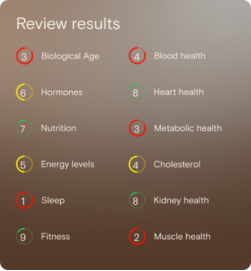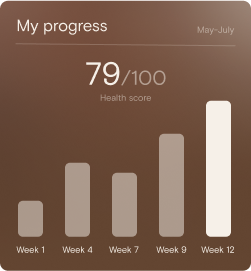What is Alkaline Phosphatase?
Alkaline Phosphatase (ALP) is an enzyme found throughout the body, but most prominently in the liver and bone. It helps with key biochemical reactions related to phosphate transfer, bone formation and cellular transport, and exists in slightly different forms (isoenzymes) depending on its tissue of origin.
Why does it matter for long-term health and wellbeing?
Because ALP is produced by both liver (including the bile ducts) and bone tissues, its level integrates signals about metabolic load, tissue repair, bone turnover and hepatic stress. In a wellness-first approach, deviations from your personal baseline may be early flags that lifestyle adjustments — such as diet, movement or nutrient support — could help optimise your internal balance before more obvious signs appear.
What’s an optimal level of Alkaline Phosphatase?
- Laboratory (reference) range in many Australian labs: approximately 35 to 110 U/L
- Optimal range (for wellness/tracking purposes): While there is no universally accepted “optimal” band published in clinical guidelines, a reasonable aim is to remain comfortably within the mid-portion of the reference range (for example, ~40–90 U/L) without trending upward over time. (You should compare against your lab’s own reference interval.)
- It's essential to interpret this in the context of other markers (e.g. liver panel, bone markers) and your personal trend rather than expecting a one-size-fits-all target.
What influences Alkaline Phosphatase levels?
Many factors can push ALP up or down, including:
- Bone growth, remodelling or repair (e.g. after exercise or micro-damage)
- Bile flow or hepatic load (e.g. from dietary, toxin, metabolic stress)
- Nutrient status (e.g. vitamin D, magnesium, zinc)
- Hormonal shifts (e.g. during pregnancy)
- Medications or supplements
- Timing of meals (some studies suggest fatty meals may transiently raise ALP)
- Age, sex and genetic variation in isoenzymes
What does it mean if ALP is outside the optimal (or reference) range?
If your ALP is higher than the reference range or trending upward over repeated tests, this may suggest increased demands or stress on your liver, bile systems or active bone turnover. If it is lower than expected or trending downward, it might reflect suppressed bone activity, lower metabolic tone or nutrient limitation. Neither case is inherently problematic — but such deviations are signals to re-examine your lifestyle, recovery, nutrition, and possibly assess other relevant biomarkers to pinpoint which subsystem is shifting.
How can I support healthy Alkaline Phosphatase levels?
To help keep ALP within your optimal zone:
- Maintain a balanced diet rich in calcium, magnesium, zinc and vitamin D to support bone turnover
- Engage in regular weight-bearing and resistance movement to stimulate controlled bone remodelling
- Support liver health through moderate intake of pro-metabolic foods (e.g. diverse vegetables, phytonutrients), limiting excess exposures (e.g. alcohol, processed foods), and ensuring adequate recovery
- Monitor and manage stress, sleep, hydration and circadian rhythm — these influence systemic repair
- Ensure you have adequate micronutrient status (e.g. vitamin D, magnesium, zinc) via diet or supplements if indicated
- Repeat ALP measurements at intervals (e.g. quarterly) to observe personal trends rather than fixating on a single value
This information is provided for general health and wellness purposes only and does not replace medical advice.
References
- Royal College of Pathologists of Australasia. RCPA Manual – Alkaline phosphatase.
- Pathology Tests Explained. Tests – Alkaline phosphatase (ALP).
- Alfred Pathology Handbook. ALP (Alkaline Phosphatase) test description.




















.png)
